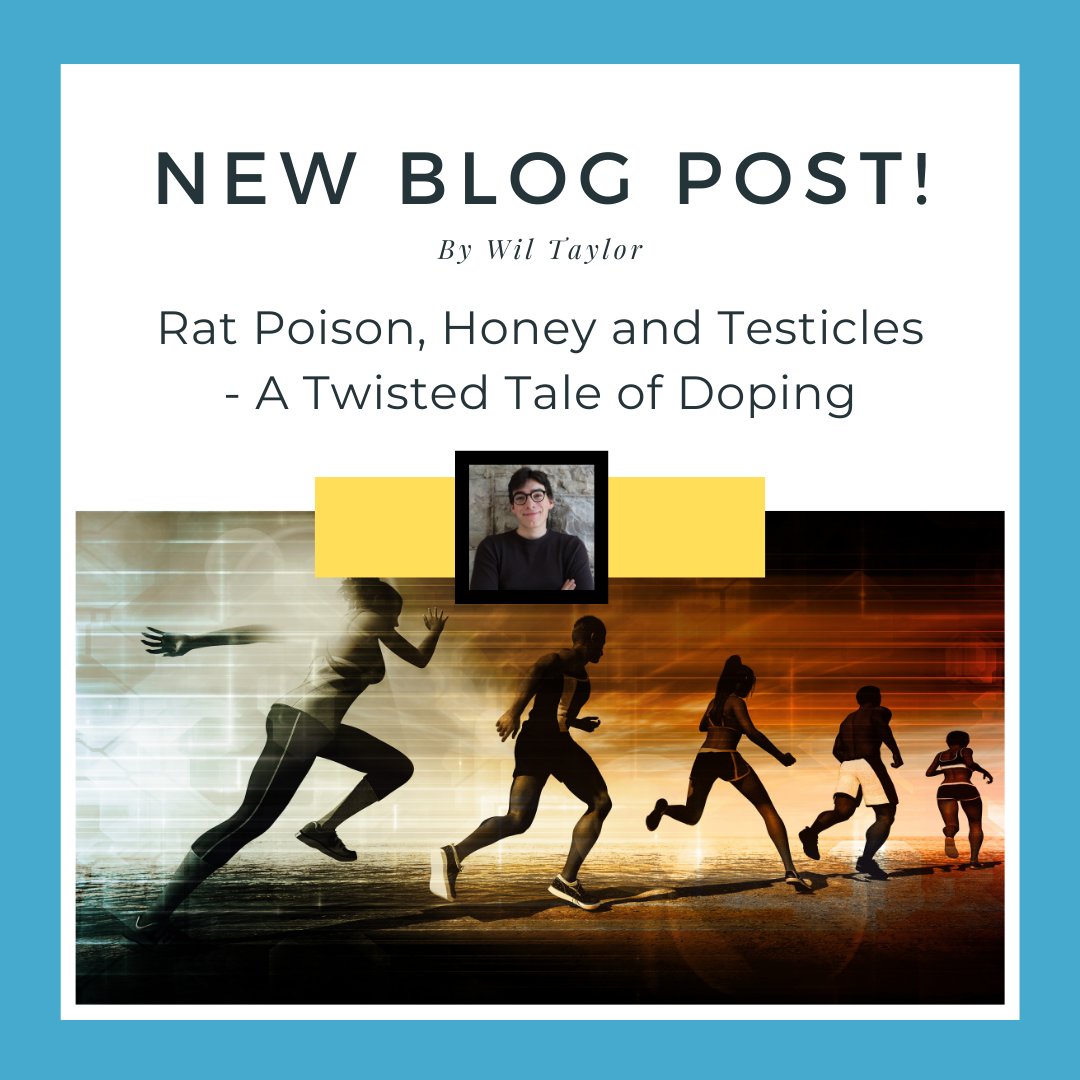Rat Poison, Honey and Testicles - A Twisted Tale of Doping
People will go to any lengths to win. A drive for competition has underscored much of human history, leading to the establishment of competitive environments and the search for an elusive edge over your rivals. The earliest attempts at gaining an advantage can be traced back to ancient Greece.
With the birth of the Olympic games came the advent of performance-enhancing practices. But unlike today, doping wasn't frowned upon—it was the norm. Athletes pursued Olympic glory by any means necessary. Some relied on specialized diets, like a sprinter who dined exclusively on dried figs, while others turned to more sinister methods involving hallucinogens, hemp, and even animal testicles. Competitors dabbled in all manner of strange substances, from psychedelic mushrooms to opioids, and some swore by swallowing stones taken from the stomachs of champion roosters. If none of these options fit your taste, perhaps you could consider drinking urine from ‘strong animals’.
Ergot, isolated from hallucinogenic fungi and a former treatment for severe bleeding after childbirth - 009042009
In fact, when Emperor Theodosius I abolished the Olympics in 394 A.D., one of his cited reasons was that they had become a hotbed of cheating and other ‘un-Christian' behaviours. However, the end of the Olympic games did not mark the end of substance abuse among athletes. In ancient Rome, gladiators bolstered themselves with herbal infusions and even dosed with strychnine—a compound now infamous as rat poison—to gain a fighting edge. This potent stimulant helped them endure grueling battles and fight through injury. But it wasn’t just humans that were doped up; chariot racers would feed their horses hydromel, a type of honey wine, to boost their performance. An arena full of drunk horses may not have been the greatest idea, and manipulation of the racing horses could have been punished by crucifixion.
Gladiators from the Zliten mosaic from about 2nd century AD.
The emergence of common-use, cocaine-based consumables in the 19th century marked a truly energizing era in doping and was often the go-to for cyclists at the time. One blend in particular – cocaine wine – was marketed as both recreational and of benefit for athletes. Mariani wine or “Vin Mariani”, as it was known in its home country of France was of particular prize. Starting in the 1860s, Angelo Mariani began marketing his very own coca wine, a blend of fine Bordeaux and coca leaves. Its advertisements even claimed it as “the wine for athletes,” and with cocaine’s ability to energize and stave off hunger, it is no surprise that it was in common use.
Advertisement for Mariani Wine - 996001923. Coca Leaves, commonly used in extracts and preparations for athletes - 000001078
One of the most infamous doping stories comes from the 1904 Olympics, where marathon runner Thomas Hicks turned to the gladiators’ old tricks. Battling heat, humidity, and a dusty course teeming with traffic, trains, and trollies, Hicks was desperate to finish the race. At that time, athletes were allowed to have coaches and assistants during the race, and Hicks, in a moment of desperation, begged them for water. While this idea was dismissed, he was instead fed a mixture of strychnine and egg whites. With a little pep in his step he carried on, and when he started to falter again, they added brandy to the mix. With some minor hallucinations and a few more egg whites down the hatch, Hicks staggered to the finish line.
Strychnine Sulphate - circa 1900 - 1970.10.9
Thomas Hicks was well within his rights to have as much egg white and strychnine as his heart desired – athletes had full permission to have assistants provide them with whatever was necessary to complete an event. But as the 20th century progressed, doping became more secretive and sophisticated. The synthesis and use of testosterone and anabolic steroids grew rampant, culminating in notorious scandals like that of the 1988 Seoul Olympics. At these games, Ben Johnson tested positive for the use of anabolic steroids and was stripped of his medal. Investigations later revealed that at least half of the athletes competing in Seoul were doing the same. Unfortunately, over time methods have become more sophisticated, with blood doping becoming commonplace, and athletes using erythropoietin and blood transfusion to enhance their blood’s oxygen carrying capacity. Continual improvements in testing have brought on more elusive techniques, and the doping phenomenon in sports is far from over.
Aqueous testosterone - can be used in an intramuscular injection to enhance athletic ability. - 1998.3.3
Though testing methods continually diversify and become more rigorous, the same can be said for those developing the drugs. This ongoing race between sports organizations and the chemists is a high-stakes race of its own, entirely separate from the competitions on the track.
References
Abbott, K. (2024, June 27). How the 1904 Marathon became one of the weirdest olympic events of all time. Smithsonian.com. https://www.smithsonianmag.com/history/how-the-1904-marathon-became-one-of-the-weirdest-olympic-events-of-all-time-14910747/
Bock, G. R., & Whelan, J. (Eds.). (2008). Cocaine: scientific and social dimensions. John Wiley & Sons.
Dandoy, C., & Gereige, R. S. (2012). Performance-Enhancing Drugs. Pediatrics in Review, 33(6), 265–272. https://doi.org/10.1542/pir.33-6-265
Gleaves, J. (2014). A Global History of Doping in Sport: Drugs, Nationalism and Politics. International Journal of the History of Sport, 31(8), 815–819. https://doi.org/10.1080/09523367.2014.909621
Higgins, A. J. (2006). From ancient Greece to modern Athens: 3000 years of doping in competition horses. Journal of Veterinary Pharmacology and Therapeutics, 29(s1), 4–8. https://doi.org/10.1111/j.1365-2885.2006.00770_4.x
Holt, R. I., Erotokritou-Mulligan, I., & Sönksen, P. H. (2009). The history of doping and growth hormone abuse in sport. Growth hormone & IGF research : official journal of the Growth Hormone Research Society and the International IGF Research Society, 19(4), 320–326. https://doi.org/10.1016/j.ghir.2009.04.009
Olympic Games. (2024). Brown.edu. https://brown.edu/Departments/Joukowsky_Institute/courses/greekpast/4881a.html#:~:text=Emperor%20Theodosius%20I%20banned%20the,strong%20to%20be%20kept%20down
Vlad, R.A., Hancu, G., Gabriel Cosmin Popescu, & Ioana Andreea Lungu. (2018). Doping in Sports, a Never-Ending Story ? Advanced Pharmaceutical Bulletin, 8(4), 529–534. https://doi.org/10.15171/apb.2018.062
About The Author
Wil Taylor is a student at Queen's University in his 4th year of Health Sciences. In his free time, he likes drawing and sculpting and is involved in theater production and carpentry.



